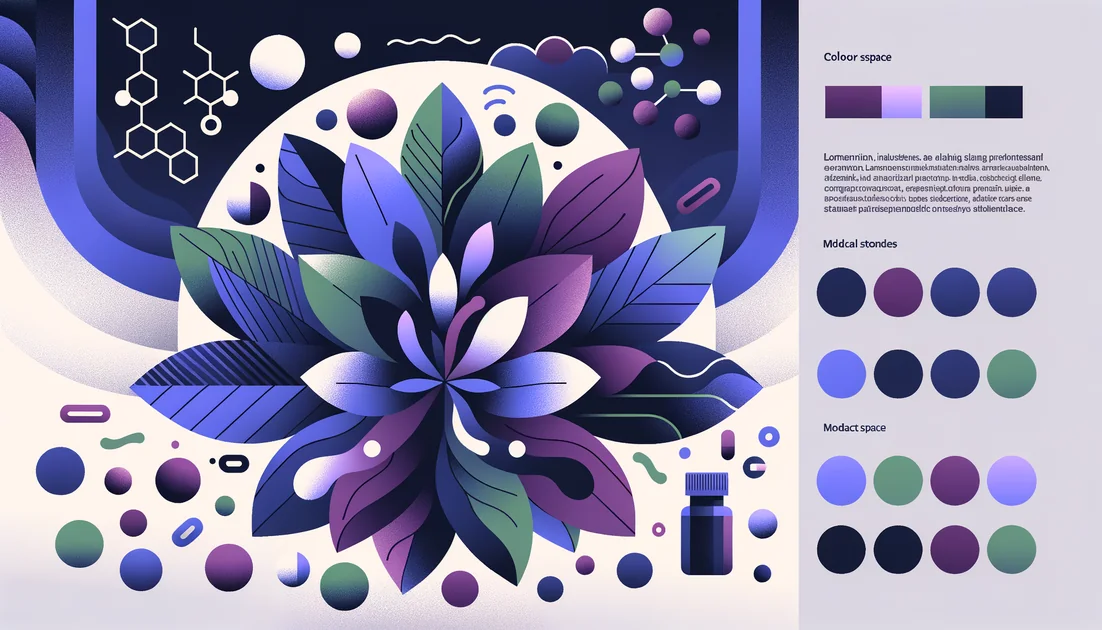
Two Names, One Mineral—and the Hidden Twist on the Label
You stand in the supplement aisle staring at two bottles—magnesium glycinate and magnesium bisglycinate—priced differently, promising the same calm. Which is "better," and why does the internet argue about it? The plot twist: they're the same molecule—and the real difference hides in a single word on the label: buffered.
- Evidence
- Promising
- Immediate Effect
- Yes (mild) → 2-4 weeks
- Wears Off
- 1-3 weeks after stopping
The Name Game: Glycinate vs. Bisglycinate
Here's the clean truth first: magnesium glycinate and magnesium bisglycinate are the same compound. Chemists often call it magnesium diglycinate or bisglycinate to emphasize "two" glycine partners holding one magnesium ion; marketers shorten it to glycinate. Different names, identical structure, same elemental magnesium (about 14.1%).[1][2] If you've heard rumors that one has "smaller particles" or "reaches the brain better," those are just rumors. The molecule is the molecule.[1][3]
The Real Divide: Buffered vs. Fully Reacted
If the names aren't the difference, what is? "Buffered." That single word can change your experience. Many reputable raw-material suppliers offer both unbuffered magnesium bisglycinate (pure chelate) and a buffered version that blends in magnesium oxide. Why? Oxide is inexpensive and boosts the percent of elemental magnesium per serving, but it's also harsher on the gut and less bioavailable for many people. One major supplier describes it plainly: the buffered form "utilizes magnesium oxide to combine high elemental magnesium value with high bioavailability."[4] In practice, buffered products vary, but expect some trade-off in gentleness if oxide is part of the blend. Think of it like a duet: in pure bisglycinate, magnesium rides into the body piggybacked on glycine—an amino acid your gut recognizes—so it tends to be calmer on digestion. Add oxide, and you've mixed a second instrument that can play louder (more elemental magnesium on paper) but not always sweeter for sensitive stomachs.
What Does the Evidence Say About Absorption?
Across magnesium supplements, organic forms (like amino-acid chelates and citrate) generally absorb better than inorganic salts (like oxide). A systematic review put it succinctly: "Inorganic formulations appear to be less bioavailable than organic ones."[7] Head-to-head studies are still limited, but two plot points matter:
- A randomized trial comparing several forms found magnesium citrate raised blood levels more than an amino-acid chelate and far more than oxide over 60 days—reminding us that form matters, and differences among "good" forms can be subtle and context-dependent.[6]
- Another crossover study in healthy adults reported a specialized "sucrosomial" magnesium increased red blood cell levels more than bisglycinate at 24 hours—evidence that the absorption race is ongoing and not owned by a single form.[5]
Bottom line: pure magnesium bisglycinate/glycinate is a gentle, well-absorbed option; buffered versions edge up elemental percentage by adding oxide. Your gut will usually tell you which you bought.
Sleep, Calm, and the Human Stories Behind the Data
Magnesium's calming reputation doesn't come from bisglycinate alone; it comes from magnesium's role in nerve steadiness and muscle relaxation. In older adults with primary insomnia, daily magnesium for 8 weeks improved insomnia scores versus placebo—small study, real signal.[8] In a modern twist, a 3-week trial of magnesium L-threonate (a different form aimed at brain delivery) improved objective sleep-stage metrics and morning alertness, hinting that specific forms might target specific goals.[9] What about anxiety? A systematic review suggests benefits for anxiety-prone groups, but the authors called out the uneven study quality and urged better trials.[10] Translation: promising, not proven. So where does bisglycinate fit? It's prized by clinicians and consumers for being gentle at the doses people actually take for sleep or stress support—often in the evening, where digestive comfort matters most. The glycine "handle" helps the mineral slip past the gut's bouncers like a familiar guest, rather than a pushy metal ion.
A Brief Origin Story: How Chelation Became a Movement
The modern push for amino-acid chelates traces back to Albion Laboratories (now part of Balchem). "Albion pioneered amino acid chelates—long before they became the industry standard," recalls Stephen Ashmead, whose grandfather helped lead the early work in the 1950s–60s.[11] That lineage matters because it explains why you'll also see TRAACS® or "fully reacted" on labels—signals that the mineral is actually bonded to the amino acid you're paying for.
"Inorganic formulations appear to be less bioavailable than organic ones." — Systematic review of magnesium supplements[7]
"The buffered form utilizes magnesium oxide.." — Supplier description of buffered bisglycinate[4]
These are not marketing lines; they're clues for decoding the shelf.
How to Read the Label Like a Pro
- Look for "elemental magnesium." That tells you the actual magnesium dose (not the weight of the whole compound).
- Scan the form. If it says "magnesium (as bisglycinate chelate)," that's what you want. If it adds "and magnesium oxide," you're holding a buffered product.
- Spot the tells. Phrases like "fully reacted," "TRAACS®," or listing "magnesium bisglycinate chelate" as the sole form suggest an unbuffered product.
- Start low, go slow. Many feel calmer sleep with 100–200 mg elemental magnesium in the evening; adjust to comfort.
What We Know, What We Don't
- Names: glycinate vs. bisglycinate = same molecule. Settled.[1][2][3]
- Tolerance: unbuffered bisglycinate/glycinate is typically gentler than oxide. Widely observed, consistent with chemistry and reviews.[7]
- Efficacy: magnesium can aid sleep and mood in some contexts, but results vary and aren't form-exclusive. More comparative trials are needed.[6][8][9][10]
If you're choosing between two bottles, prioritize purity (unbuffered) and clarity (elemental dose). Then let your goal (sleep, stress, muscle comfort) and your gut response guide the rest.
The Quiet Lesson
Sometimes health isn't about discovering a new ingredient; it's about seeing clearly. Two names, one molecule—and a single word that changes the experience. Read the fine print; your nights might get quieter.
Key takeaways
- •Glycinate and bisglycinate are identical; naming differs, not chemistry.[1][2]
- •"Buffered" often means some magnesium oxide is added—harsher for some guts; unbuffered is gentler.[4]
- •Organic forms generally absorb better than inorganic; oxide lags.[7]
- •Comparative trials show differences among good forms (e.g., citrate, sucrosomial), so no single winner in all cases.[5][6]
- •For sleep/calm, start 100–200 mg elemental in the evening; watch labels for "elemental," "fully reacted," or TRAACS®.[8][11]
You might also like
Explore more of our evidence-led investigations, comparisons, and guides across every article style.

Country Life Vitamins (Country Life, LLC)
Country Life's Pattern: Early gluten-free leader with strong GMPs—but a modest R&D footprint and room to grow on transparency

Probiotics (live microbes) vs Prebiotics (selective substrates)
For most common needs: after antibiotics or for IBS/mood support, choose Probiotics; for constipation and day-to-day fiber-driven microbiome support, choose Prebiotics. Combine judiciously (or use synbiotics) once tolerability is clear. [4][6][9][22]

Best for Weight loss
Green tea catechins + caffeine

Rhodiola rosea
A sealed research city in Siberia. Sleep-deprived cadets. Cosmonauts orbiting in tin can silence. The herb that kept surfacing in their logbooks wasn't caffeine—it was a rose-scented root from the Arctic: rhodiola. Soviet scientists whispered that it could keep you alert without the crash, a plant that trained the body to ride stress instead of breaking under it.[1]

Protected Brain Fuel: Prevent The Damage
Protective + dual-pathway combo with promising but not definitive synergy; best for lowering inflammation/oxidative stress markers, not proven to outperform omega-3 alone on hard outcomes.

Tocotrienols
The stealthier cousins of vitamin E—built with springy tails that move differently in cell membranes and behave differently in your body.
